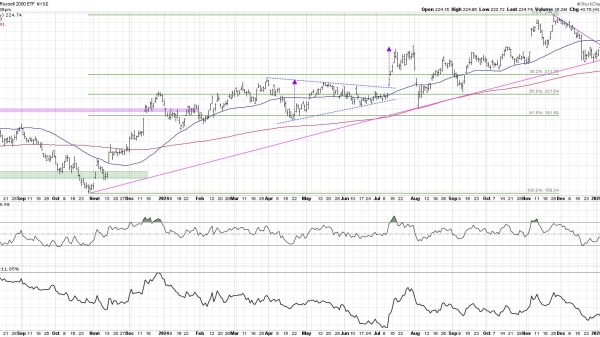Mainstream historians attribute the postwar economic success of South Korea and Taiwan to the legacy of Japanese colonialism. The Japanese are credited with providing new technologies, critical infrastructure, and an efficient state that enabled industrial progress in South Korea and Taiwan. Both Taiwan and Korea benefitted from the successful adoption of Japanese technologies and recorded industrial growth under imperial rule.
Moreover, during 1913–38, Taiwan and South Korea experienced rapid per capita gross domestic product growth accompanied by broad social transformations. Scholars describe Japan’s state-building project in ex-colonies as having the features of a developmental state. Unlike Western colonialism, the legacies of Japanese rule are earnestly portrayed as progressive and positive. Japanese colonialism did result in some favorable outcomes for Taiwan and South Korea, but reassessments of the literature have shown that these laudable effects have been exaggerated.
Starting with anthropometric data, researchers show that the average height of Taiwan’s ethnic Chinese rose under colonialism, but this pattern was never sustained because height and other indicators of welfare stagnated in the 1930s. Additionally, a review of the colonial period in South Korea avers that per capita caloric intake failed to increase continuously, and other measures such as real unskilled wage decreased in the 1920s and 1930s. Closer inspections of Japanese rule reveal perceived achievements to be quite fleeting.
The Japanese are even lauded for cultivating an entrepreneurial class in her colonies that was supported by Japanese expertise and capital. However, the historical record paints a different picture. Infrastructural projects aided the growth of indigenous capital, but Japanese firms obtained special privileges at the expense of local businesses that were too small to compete or unconnected to the government bureaucracy. Japan’s economic policy benefitted some local firms in Taiwan and South Korea, but it largely served military and geopolitical objectives.
Further, economist Anne Booth opines that industrial growth in Taiwan and South Korea was not that rapid relative to elsewhere in Asia. Booth points out that in Taiwan, like the Philippines, Indonesia, and British Malaya, industrialization largely hinged on agricultural processing until the 1930s. On the other hand, growth in Korea was impressive but started from a low base. Like Indonesia, Korea benefitted from an influx of foreign capital that spurred manufacturing in the 1930s. By 1940, manufacturing accounted for the same share of gross domestic product in both territories. However, the share of labor employed in Indonesia was higher.
Responding to Atul Kohli’s assertion that Japanese colonies were characterized by more progressive governments, Booth notes that by the first decade of the twentieth century, all the colonial powers in Southeast Asia had built effective administrative structures that emphasized the modernization of fiscal systems. As such, revenue per capita grew rapidly in Korea after 1910. Yet by 1929, Korea’s revenue per capita was on par with the Philippines and Burma.
According to Booth, Taiwan and Korea possessed superior endowments of roads and railways relative to most places in Southeast Asia in the late 1930s. However, neither place was better served than Java. Likewise, British Malaya had relatively good transportation infrastructure and electric power capacity. Korea and Taiwan had great advantages in irrigation since nowhere in Southeast Asia could boast an equally extensive irrigation network. Nevertheless, irrigation was also prioritized in Indonesia and Vietnam. Demographically, the profile of Japanese colonies was also similar to non-Japanese colonies in Asia, with Taiwan’s infant mortality rate being just a little lower than British Malaya.
Academically, Taiwan was ahead of most places in East and Southeast Asia based on the ratio of educational enrollments to the total population by the end of the 1930s. Interestingly, in British Malaya, this ratio was above that of Korea, although a number of students were disproportionately Chinese and Indian rather than Malay. The Philippines was the leader in access to postsecondary institutions with more than forty thousand students enrolled in higher education by the early 1940s.
Despite building schools in Taiwan and Korea, education was elitist, and nearly all Taiwanese were denied access to tertiary education and white-collar jobs. Although the Japanese made investments in primary education in Korea, they pursued a hostile cultural policy that limited Korean language use and displaced Korea’s indigenous educational system. By 1944, less than 14 percent of Korea had benefitted from any schooling, and 2 percent of Koreans had matriculated beyond primary levels.
After rigorous analyses, the achievements of Japanese colonialism appear quite pale when compared to other powers. Anne Booth comments that America was the real trendsetter, considering that they encouraged self-government and the eventual independence of the Philippines. Americans also placed a greater premium on secondary and tertiary education than the French, British, Dutch, or Japanese. Their policy was so successful that, by the 1930s, Filipinos were represented in almost all posts in the civil service, and many were influential in the private sector and various professions. In contrast to America’s liberal approach, the Dutch and the British expressed doubts about the abilities of natives to become competent citizens and entrepreneurs.
Furthermore, although Japan is perceived as a pioneer in building infrastructure, Anne Booth and Kent Dang observed that Japanese colonialism in this regard is actually comparable to her rivals rather than superior. In all colonies, colonial engineers employed the expertise of the metropole’s population to erect railways, roads, and irrigation projects. For example, Dutch achievements in Java were similar to those of the Japanese in Taiwan. The Dutch constructed large-scale irrigation networks in Java, which still exist today.
Some posit that the development of Korea and Taiwan is attributable to postcolonial policies instead and that Korea would have developed without Japanese colonialism due to the legacy of precolonial educational institutions. Japanese colonialism might seem progressive, but the evidence shows that, relative to non-Japanese colonialism, it was rather ordinary. Therefore, we can deduce that South Korea and Taiwan encountered spectacular development courtesy of postcolonial economic policy, entrepreneurship, and investments in human capital that accelerated after the colonial era.























